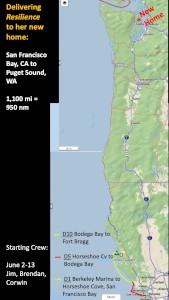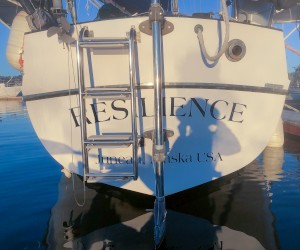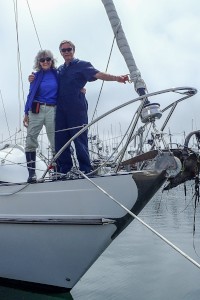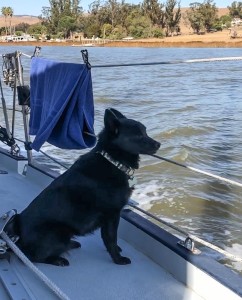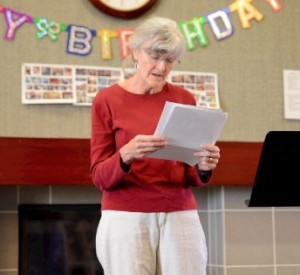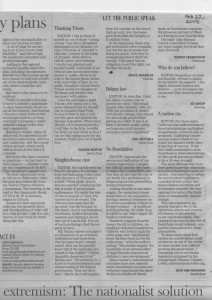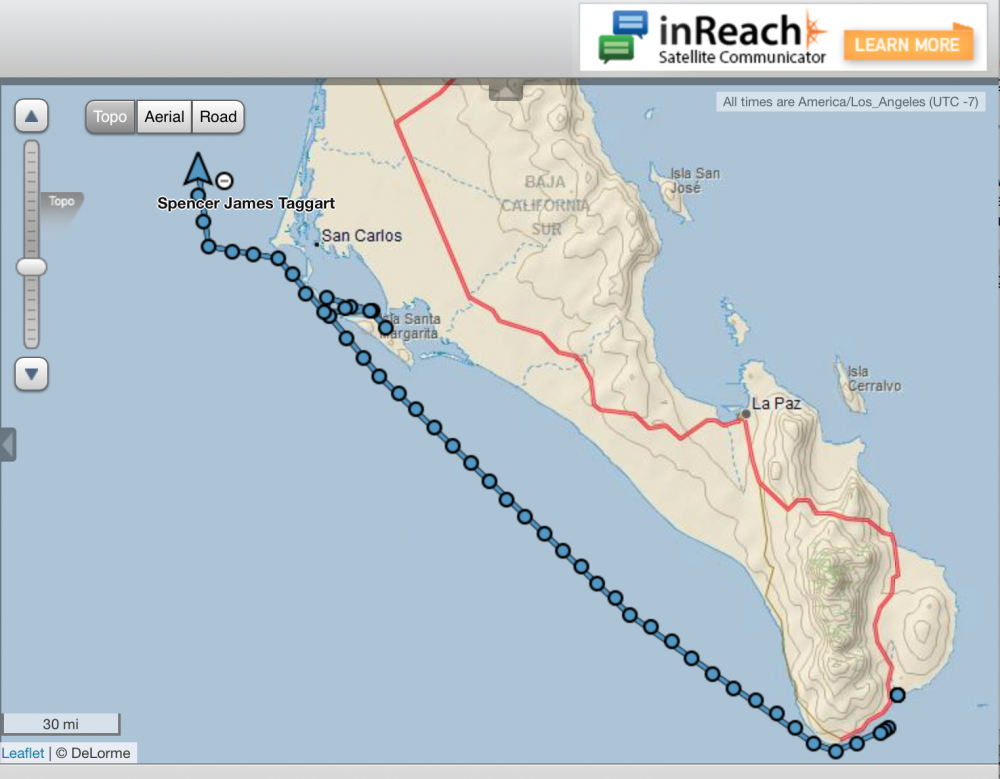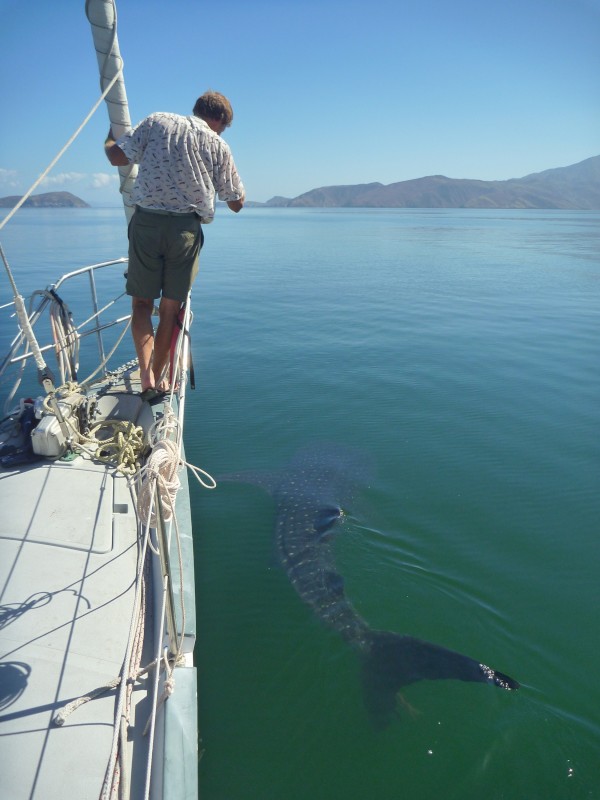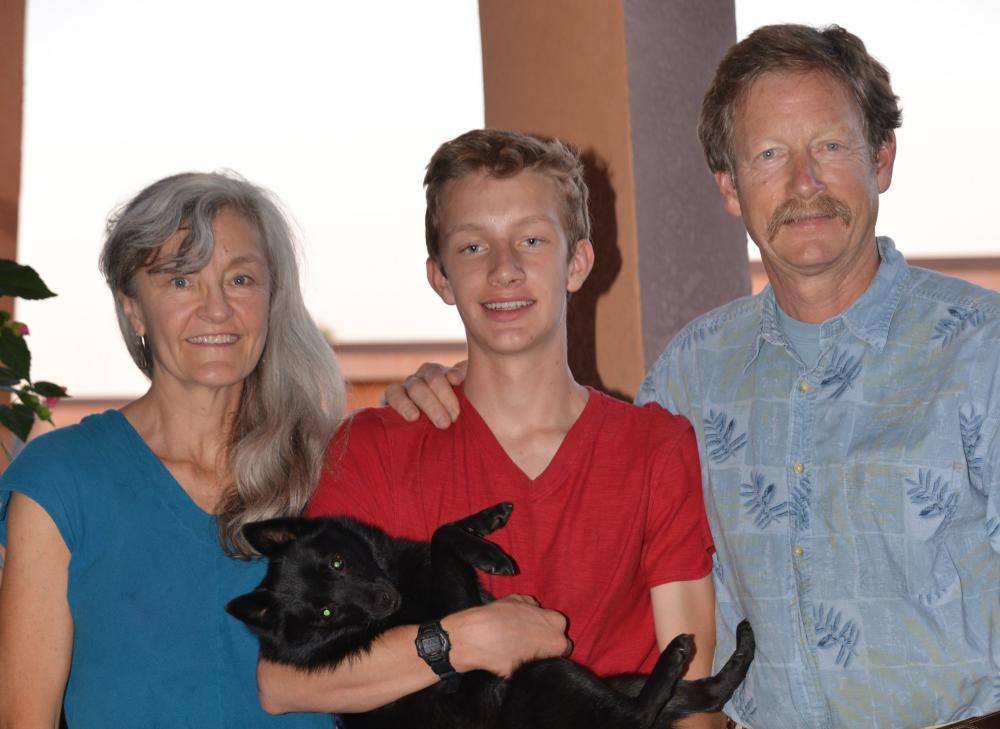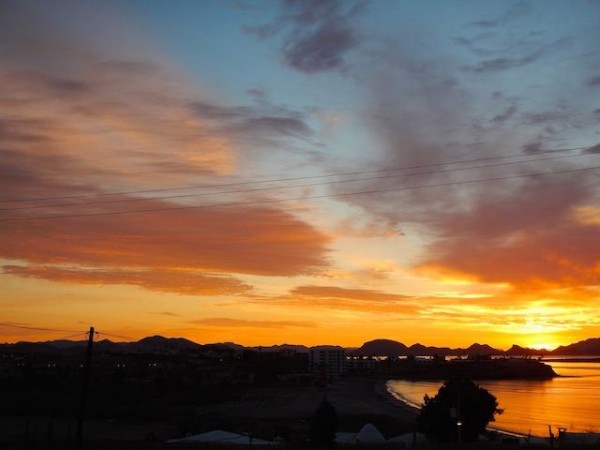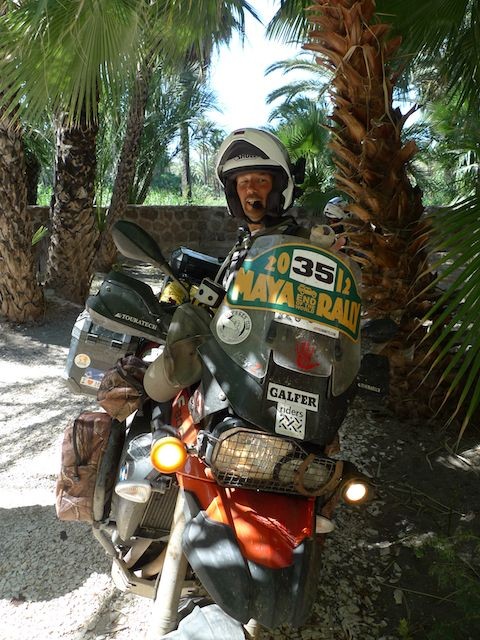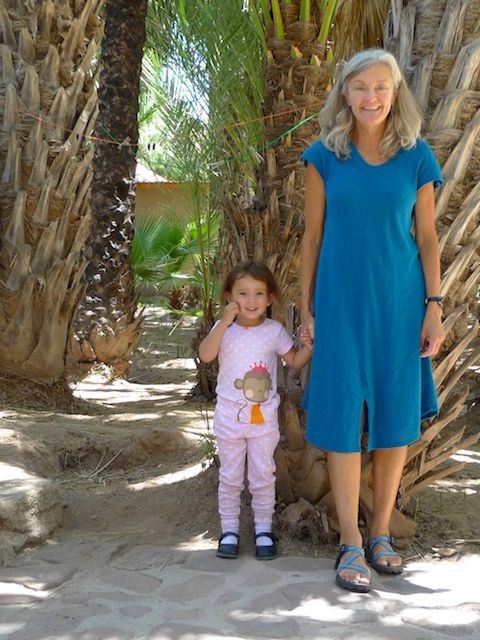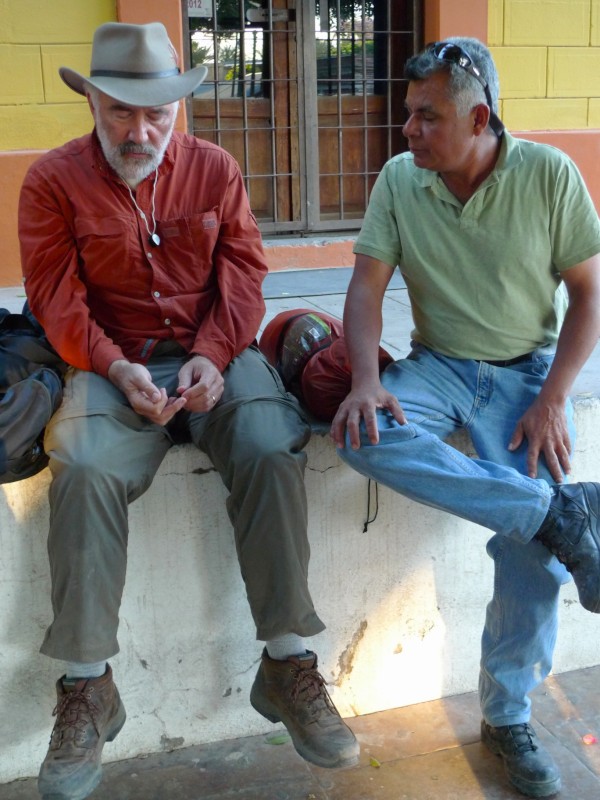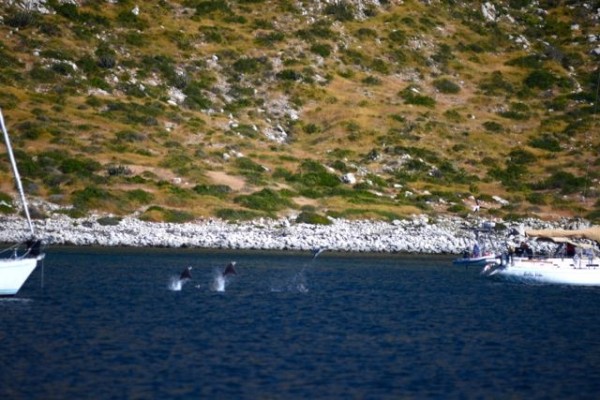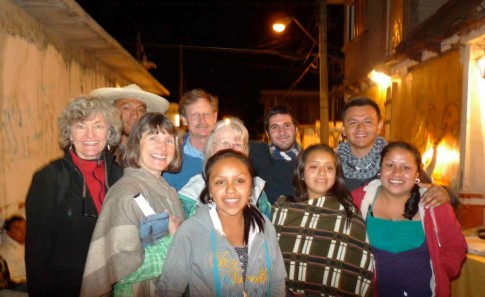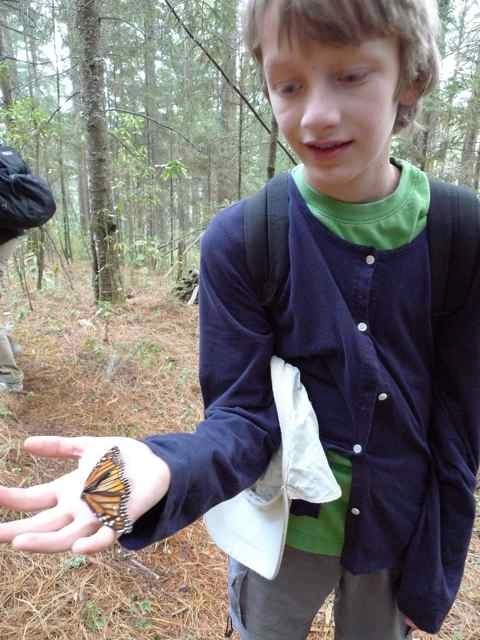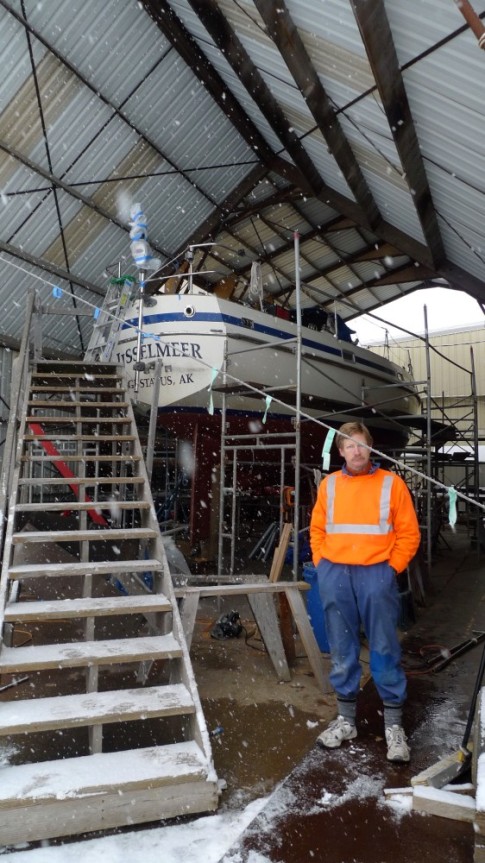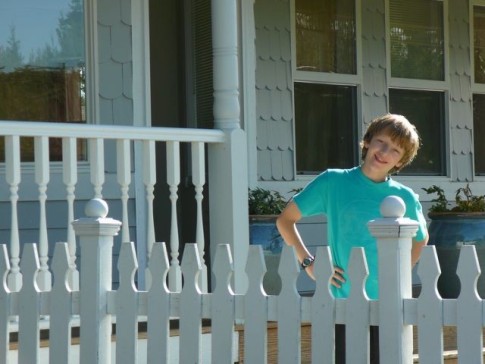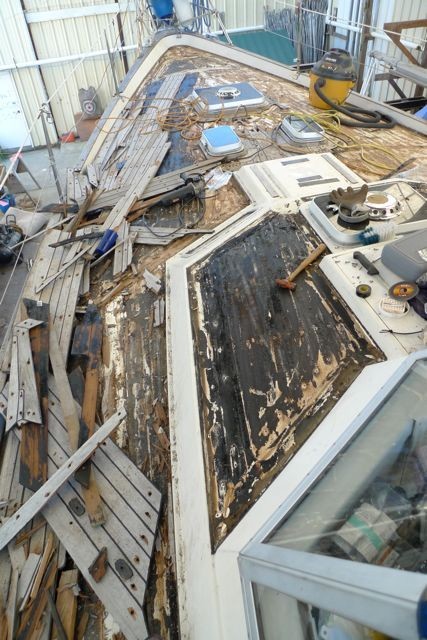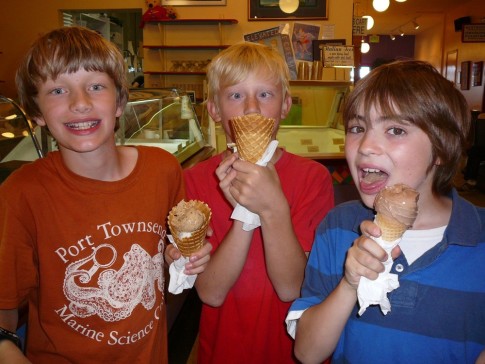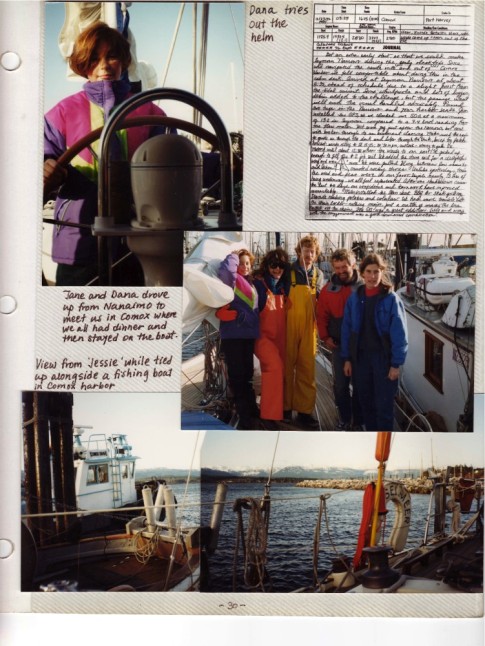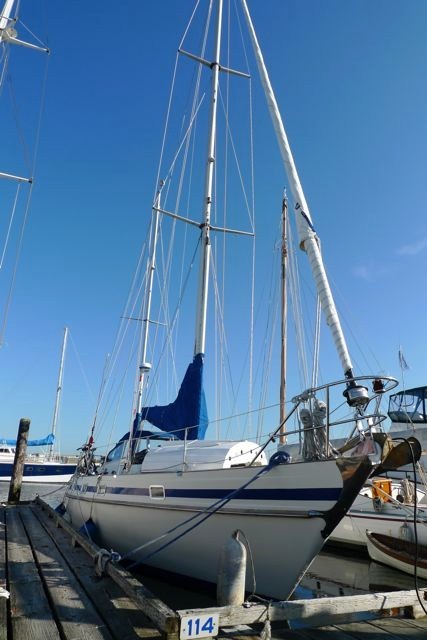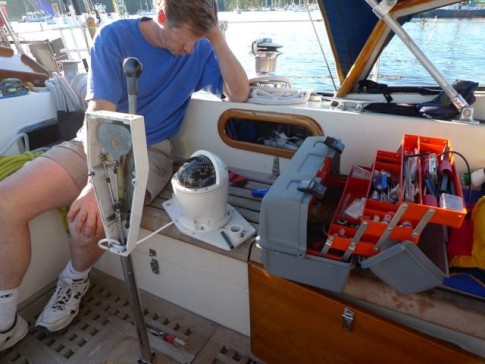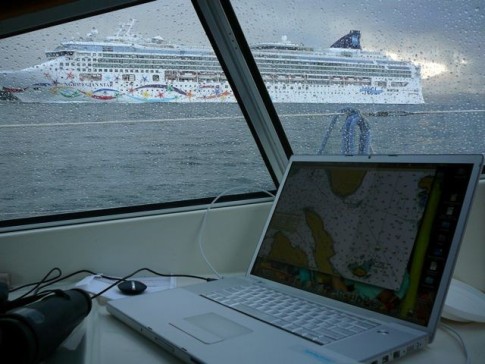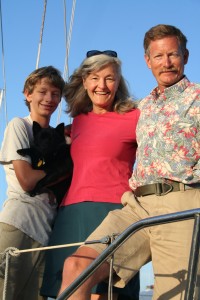MatTag Sailabout
Stories, photos, videos, and natural history updates from a family of three traveling from Alaska to Mexico on their sailboat with their Schipperke.
| Vessel Name: | RESILIENCE |
| Vessel Make/Model: | Contest 44 |
| Hailing Port: | Juneau, Alaska |
| Crew: | Beth Mathews, Jim and Glen Taggart |
| About: | |
| Extra: | 2016: Last year Jim delivered our sailboat from Baja to San Francisco Bay where Glen and I met him for the final leg up the Petaluma River to her new home. Resilience is now moored in the Petaluma Marina, only 20 miles south of our land home in Santa Rosa. |
| Social: |
22 June 2023 | Fort Bragg
Northbound Expedition: San Francisco Bay to Puget Sound
While I as on my book tour for Deep Waters*, Jim's been preparing Resilience for the big move north from San Francisco Bay aree to our new home in Puget Sound, Washington. For the first 2 weeks in June, Jim and crew--Brendan and Corwin--were geared up to start the journey from CA partway to her new [...]
04 December 2022 | Sonoma County
Shadow selfie with Resilience
Shadow selfie from our pedalboard, my favorite way to explore and go birding. Wishing you a fulfilling new year!
22 July 2020 | Bodega Bay, CA
Wilderness with a Big W
Day 40 aboard S/V Resilience*: Last Saturday (7/11), we ducked out under San Francisco's Golden Gate Bridge and motored north into 4-5 foot seas ~4 hours to the shelter of Drakes Bay, off Point Reyes National Seashore. The contrast with exploring the calm, warm-water Delta is striking. Everything [...]
18 December 2019 | Petaluma River
Edgy déjà vu: Petaluma River Retreat from Kincaid Fire Smoke
The Kincade fire began on October 23, 2019 and eventually consumed 78,000 acres--the largest wildfire Sonoma County has ever experienced. The first whiffs of smoke sparked an edgy déjà vu. At noon that day, Jim left our home in Santa Rosa for Petaluma to do some work on our sailboat, planning to return that evening. Although Santa Rosa did not experience an imminent threat, as the Air Quality Index rose, and high-wind forecasts persisted, we decided to shelter on Resilience and head down river to San Francisco. Leaving also meant we could offer our home to a family who had been evacuated from Windsor or Healdsburg, the heart of the Kincaid fire. This short video chronicles our oddly serene trip down the Petaluma River, through agricultural land and past a bucolic small town.
10 January 2016 | Santa Rosa, Ca
VIDEO: Beth reads "The Third Try," a story about releasing fishing line snarled around the prop
Beth Mathews is a marine biologist and writer who set out on a three-year sailing adventure from Alaska to Mexico with her ten-year-old son and husband, after her husband had a debilitating brainstem stroke. In this video, she reads about snorkeling beneath the boat, while in Mexico, to cut the boat's [...]
06 January 2016 | Petaluma Marina
Make a Difference in 2016
With the New Year's first week about to vaporize, I paused today while walking in downtown Petaluma (20 miles south of Santa Rosa) to think about what I had done last year that I wanted to do more of in 2016. The list started with "exercise." Then I remembered that in 2015, I submitted a letter to the [...]
A close call
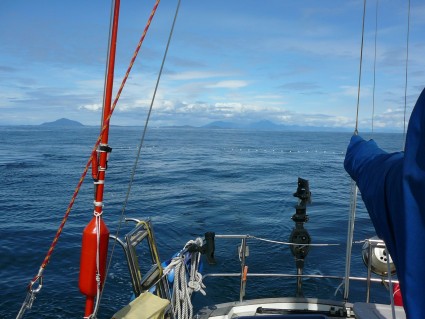
June 28, Monday (Day 8)
04:33 Depart Ketchikan
07:15 PM Arrive Prince Rupert, Canada
June 29, 2010, Tuesday From Prince Rupert, Canada
[NOTE: I am just learning how to use this blog site, so I have not made any previous entries, although we have been underway now for 8 days and I have kept a spotty journal. I will start with what happened yesterday, then include more about the beginning of our trip. We are really happy to have started this new chapter in our lives. Thank you all for your help and support! -- Beth]
Yesterday, during the late morning, we were crossing Dixon Entrance, on our way from Ketchikan to Prince Rupert, a deep water port in Canada . We were only a few miles north of the Canadian boarder when we had our first "incident", defined as something unexpected and potentially threatening. We were motoring, because the northerly winds were light (~7 knots) and we needed to make good time to meet our date with the rigger in Port Townsend, Washington, many days away.
We had had to wait two days in Ketchikan for Tuesday's weather window. To the west, Dixon Entrance opens to the full North Pacific, stretching unobstructed to Japan and China's eastern shores. With that much fetch, large seas are the norm. Strong winds, especially those traveling in the opposite direction as the seas or currents, can make the open water passage into Canada challenging or worse.
The day before, in Ketchikan, it had rained sideways, We'd even had some boarder-line hail while remounting the radar dome onto the mizzen mast. Two days earlier was almost shorts weather.
Jim and I had been up since 4:00, so around 10:45 I went below to try to nap. Glen was already resting in the aft cabin, where the movement of the boat is minimal. Although the winds were light, the southwesterly swells shoved Ijsselmeer, a 44 foot Contest 44 sailboat, back and forth as we steamed due south, quartering into the long-wave length swells.
I took the hand-held radio with me to the aft cabin, tuned to channel 68. Jim had the other hand-held with him. Although the conditions were not at all extreme, we'd agreed that this would be part of our protocol when one of us slept while the other was at the helm and Glen was not up top. In conditions like today, this was more to help me relax and sleep than a real necessity. The steady thrum of the engine masks most sounds from above. If I've been resting down below for a long while and have not heard him move about, I like being able to check on Jim. to hear his voice, if I start to worry that something might have happened. In my nearly-asleep phase, irrational fears that Jim might have gone overboard occasionally spike.
I'd called him on the radio once, just after the boat lurched especially hard. Of course, he was fine. Glen, who is eleven, had been reading, but he too was now resting. Strong seas like these often make me drowsy. I was almost asleep, when the Perkin's engine's steady hum, suddenly roared as it was shifted hard into reverse.
"Jim! What's happened?" I shouted as I was already half-way to the companionway, Glen on my heals, on our way up top to find out what was amiss. "Maybe we hit a large log," I first thought. That explanation, however, did not fit, since I had not heard any "thud" against Ijsselmeer's thick fiberglass hull in the seconds that had passed.
As soon as I got up on deck, I could see the problem, but some of the data did not make sense. First, Ijsselmeer, who had been traveling at a steady 7.5 knots less than 40 seconds earlier, had no forward momentum. None.
Stopping a 39,000 pound sailboat while it is cruising near its hull speed is almost a physic's defying feat. With her forward vector reduced to zero, the large swells seemed to have even more of an effect on her side-to-side rolling. As I yanked on my life jacket, I had to grab a rail to keep from lurching off balance. Glen was right beside me, buckling himself into his yellow life jacket.
By the time we arrived on the scene, Jim was already at the stern looking down into the water.
Bisecting the water beneath and across Ijsselmeer's stern belly was a floating line regularly dotted with small white floats. The line extended exactly perpendicular to our hull to the port and also to starboard, and it continued as far as I could see, until the sea swell height made it disappear from view. Hanging down from the line was a gill net that draped some 50 ft into the dark depths below. We were connected to nearly an acre of mesh net that had been ensnaring salmon for several hours.
Two 35-40 foot fishing boats were in the area, but I was surprised that neither of them was on its way toward us and that we had not heard any urgent calls, or curses, hurled across the VHF radio.
Then, one of the boats, the light-blue hulled one, made a sharp turn and began galloping toward us. Her Captain stood tall at the top level, open-air helm, as he powered toward us with a palpable intensity. As he approached our starboard side he shouted down to us, "You better have dive gear to dive on that!"
Jim was intently making his assessment and, I could tell by his body language, he was already in full gear "solve-this-problem-now" mode. My sense was that I needed to buffer Jim from the naturally agitated Skipper's verbal fireballs, to give Jim space to think.
"Do you have dive gear?" the skipper barked, still hovering above us.
"Yes, we do," I answered.
Returning my attention to the net and Jim, I said in a much lower voice, "It doesn't look like its caught in the prop," guessing that Jim had already made this evaluation and was trying to figure out how we might slip it off.
"Should we get the boat hooks to see if we can push it down?" I asked.
Jim nodded that this would be good, so Glen proceeded to retrieve the farther pole near the bow, while I reached for the one near the stern.
Before I could slip the boat hook up out of its loop, Jim redirected me: "Get the canon balls and bring them to me. "They're in the anchor locker."
I could feel the intensity of his thinking and I started to visualize what he might be planning to try.
The Skipper, who had been prancing impatiently nearby, watching, shouted down to us, "You gotta get outa there. This is how I make my living. You're sitting on top of a five-thousand dollar net."
Jim briefly redirected his attention upward to the skipper from his kneeling position next to Ijsselmeer's stern rail. "We'll get it off. We understand," he said.
I then added, more loudly than Jim's response, "We don't think it's entangled in the prop."
"That's what they all think," he said, looking down on us with understandable disdain. "I've never seen anyone go over a net and not get it wound around the wheel," he added forcefully.
As I made my way to the bow to get the canon balls, I said "We'd like to be the first," looking up and making eye contact.
"Glen, get my dive gear. It's under your bed in the forepeak," Jim instructed.
Glen promptly headed down below to pull the gear out of the hold under his bed cushion.
Ijsselmeer was adrift. She pitched and rolled as the swell had its way.
I opened the anchor locker hatch, aware that it wanted to slam back at me because of our sideways pitching. Fishing through some line that lay on top of them, I reached for one of the 4" diameter, lead weights, normally used to drive lures down to the imagined level of a targeted school of fish. As I pulled it up, the density of the metal ball surprised me, again. I set it carefully down so that it wouldn't roll with the next wave, got the second one out, and closed the anchor locker lid.
I bent down to pick up the two canon balls, one in each hand. As I started to walk back to the stern, Glen and I made eye contact. With his expression, he said, "Be careful!" He'd seen that I'd almost lost my balance.
With an extra 30 pounds held just above my waist, my center of balance was shifted significantly upward. The boat's first pitch had shoved me toward the port side. I lowered myself and moved aft in a crouch.
As I passed by Glen, he got my attention. He turned his face away from the Skipper's direction. He was struggling with something he needed to say.
"I don't want Jim to dive on the net," he said. I could see that he was afraid for Jim's safety and I knew instantly why. Two summer's ago, the summer after Jim's stroke, a terrifying situation had ensued while the three of us were anchored in Taku Harbor when Jim went snorkeling for the first time post-stroke. Since then, Jim had been snorkeling and swimming many times without that same issue arising. Still, I understood why the prospect of Jim going into the water under these circumstances would alarm Glen.
"If Jim goes in to release the net, we'll do it very carefully," I reassured. Although the swell made being on Ijsselmeer uncomfortable, we had almost no wind and we were well offshore, away from hazards. It could have been a lot worse.
When I got back to Jim, I set the two canon balls down near him, where they couldn't lurch out of his reach. We were still perched over the same stretch of net. There was almost no wind.
"I need a short piece of line," he commanded from a focused center, knowing that I was in my "happy to help you with whatever you need," mode.
"What size?" I asked, already moving toward the sail locker where we keep spare line.
"About quarter inch," he answered, not looking up.
"All we have is this really long piece, the one with the blue and red flecs," I called back.
A pause, and "That will do."
I heard the gillnetter's engine, as he maneuvered to stay next to us, observing.
"You gotta get that net off. I've got to pick that net soon, and you're in the way."
"We're working on it," Jim answered, briefly turning his head to look up at the Skipper.
Jim tied one end of the brand new line to one of the canon balls. Then, he connected the second one to it with about two feet in between. From the second ball led the tail, a stretch of about 20 feet of line.
"Okay, let's lower these over the net," Jim said to me. I could feel the Skipper staring at us from over our shoulders off our starboard stern, the side of the net we were going to try to lower.
We maneuvered the first ball onto the aft side of the net, then used the close end of the tail to guide the second ball over the front side. At first the net didn't seem to move, then the float line started to sink. But, as it did, the pair of weights were also slowly slipping away from Ijsselmeer, naturally sliding down to where there was nothing holding them up.
The dark-tinged water was crazy with plankton, easily visible from our perch 6 feet above. We could only see a few feet of the nylon mesh net below. One snagged salmon was barely visible through the murk, held in place by his flared gills.
Would Jim's contraption pull the net off?
Then - it seems as if my brain deleted a few images in between- the depressed section of net was suddenly behind us moving slowly away, inch by inch.
"We were free!"
I had the canon ball tail in my hands, and thought at first that I could pull the married unit on board, but our angle to the net was sharpening and the canon balls were caught in the net. The line was pulling hard against me as we moved away from the net wall.
"Leave it: I'll get your gear for you," called the Skipper, his tone less harsh, but still authoritative. "You gotta get outa here."
- - -
Jim, knowing the configuration of Ijsselmeer's fin-keeled hull and intimately familiar with our newly installed folding prop, had suspected that the net might have slid over, or perhaps onto, the prop. He knew that the prop's outstretched, splayed-blade configuration during those instants of high-throttled reverse spinning, should then have folded down together, like a seal's tapered hind flippers on the glide stroke, as he shifted into neutral from reverse. Rather than spinning the net into an angry wad of snarled net mesh, the hinged prop blades and perfectly timed shifting into neutral had left the net unharmed.
Earlier, while Glen and I were napping, Jim had seen the two fishing boats far ahead and had been on the lookout for nets. One of the gillnetters was inshore and one offshore of our trajectory. Through binoculars, Jim had observed two large orange floats closer to one boat and another two closer to the second gillnetter. Jim had deduced, erroneously as it turns out, that there were two nets in the water, each net's ends flagged by a fluorescent marker float. Instead, we now surmise, the gillnet curtain continued between the second and third floats that Jim had thought were end floats. In the undulating sea, the white floats between them were not visible until he was almost upon them.
---
As we motored away from the long snake of net, I imagined that the Captain, perhaps for the first time, was relieved that he'd been wrong.
[I will next add postings for the earlier days of our trip so far.]
June 23, 2010: We are now underway!
Day 1: Juneau to Farrugut Bay, Frederick Sound
Two mornings ago, on Monday morning (June 21, 2010) at 4:27 AM, we finally released Ijsselmeer's dock lines from her Douglas Harbor stall. On the previous day I finished the last, most essential bits of clearing out of my office at UAS, including pruning, inventorying and archiving 19 years of materials and files, and I finished sewing the 50 foot-long jib sail cover. Jim finished mounting our new wind steering vane, and Glen enjoyed his last day with two friends by exploring Douglas's nearby Sandy Beach.
Our first leg traveling south from Juneau went very well, thanks in part to the accommodating weather: light southerly winds and minimal seas. After the first 4 hours, I reluctantly went below for a much-needed nap, while Jim stayed at the helm and Glen read. Despite my deep exhaustion, I could not initially fall asleep. "We are really doing it," I thought, "stunned at how good it felt to finally be underway."
We motored south down Stephens Passage, past the Brothers Islands where I spent my first summer in Alaska back in 1982 assisting with a humpback whale study, then around Cape Fanshaw into Frederick Sound to the east. A fog bank along the southeast shore prompted us to come up with a back-up plan. Rather than pressing on to Petersburg, we could select a place to anchor in case we needed to wait for clearer weather. Although we had mounted the new Furuno radar dome, it was not yet installed: that task that got shoved to the bottom of the constantly growing list by more essential work, like repairing the steering pedestal. I took the helm in Frederick Sound while Jim slept. The sun emerged between bands of high clouds. Three humpbacks surfaced in the distance. Ijsselmeer ploughed through the water. Bliss.
Around 5:00 PM we anchored in a sweet cove along the west shore of Read Inlet within in Farrugat Bay (see map) 20 miles from Petersburg. We were both bone tired and decided not to press on further. A series of light squalls interspersed with clear skies passed overhead as Jim prepared dinner and I continued to stow items left in the wake of several projects we'd completed shortly before departing.
For dinner Jim prepared seared king salmon, freshly caught by our dear friend Bill Brown.
We look forward to communicating with you through this web site. As time allows, we will add a "Projects" section and more photos and hope to improve the look and functionality of the site.
Life on a sailboat
If you are part of a couple or family, living harmoniously on a sailboat requires modified behaviors and new routines. Ideally, everything must have an agreed-upon home -of course to make it easy to relocate -but equally as important, to catalyze and simplify the clean-up process. On a 44 foot sailboat, it only takes a couple of in-progress projects, with their assorted tools, removed components, and newly generated trash left out, to shift the boat from its serene, orderly mode into a chaotic, cluttered, unharmonious habitat.
Unlike life on land, where a section of the garage or an entire closed off room can be dedicated to a project for weeks or months, we have to live on top of our repairs and projects. Every day. We still have projects we want to complete during this passage from Juneau to Seattle, but it also helps to have most of the biggest jobs, like the steering repair, wind vane installation, and fuel system upgrade completed.
My tolerance threshold for the natural chaos that ensues when we tackle a bigger project on the boat is much lower than Jim's. During the past 6 weeks since we moved fully onto the boat, I have had moments when I thought I could not tolerate the disorder, when I thought I might have to leave for a long walk or spend the night somewhere else I am very grateful that he is better at maintaining the bigger vision than I am, and he has been very patient. As we accomplish more and more of the goals we have set out for ourselves, I am developing a deeper reservoir of trust in our abilities and in Ijsselmeer's resilience. When we both dive into the clean-up-and-put-away phase, she bounces back quickly to once again become our safe and nurturing haven.
Sandy's Wisdom:
I have evidence that I am not alone in this disequilibrium with Jim, who can put up with the disorder longer and better than I can.
About a month ago we were invited to dinner on Sandy and Jerry's sailboat, the Windseeker II, the steel-hulled boat moored next to us in the Douglas Harbor. Sandy and Jerry, an energetic team, have been married since they were just out of high school. They have lived a rich, atypical life. They have one son, and have raised two other children who consider them parents. Instead of becoming complacent and settling into a comfortable, familiar routine, they have chosen to embark on a challenging adventure together. Not that there isn't some tension between them: I would be surprised to find a sailing couple preparing to go cruising where there is not some degree of divergence in intent or commitment.
The other guests had already arrived and Sandy was giving me a tour of their sailboat's interior. Windseeker is a 48 foot steel-hulled boat, whose very functional exterior belies a classically elegant interior: elegant mahogany woodwork and a well thought out design create an inviting living space.
Sandy, an amazingly cheerful and warm but not at all superficial person, showed me the galley, the pilot berth along the companionway to the aft cabin. Referring to Jerry, she confided, "He is a wealth of knowledge. You should pick his brain. " Later she said, "Sometimes I get pretty frustrated with the chaos his projects create, but I just try to clean up after him and support him."
Very good advice; I made a mental noted to be more like Sandy.
Wednesday morning, June 23, 2010:
Yesterday evening we set our alarms for 4:00 AM again so that we could reach Petersburg early. We arrived in the harbor at about 9:30 AM and spent the day in Petersburg, located at the north end of Wrangell Narrows, getting Ijsselmeer further prepped for the journey to Port Townsend. We stowed more gear to handle rougher water than we've had so far. Later in the day, while I ran errands in town, Jim (with help from Glen) installed our new table, which we designed on paper several years ago. Before we sold our house, Jim had started to build the table out of maple, but it was set aside as we were swept into the overarching effort to pack up, sell, loan, or give away all of our non-Ijsselmeer possessions.
The new table was a project we almost abandoned several months ago, during one of our triage strategy sessions. Jim could not afford to work on the table any more; we needed him to devote his time to more essential jobs, like upgrading the fuel system and taking the lead on installing the wind steering vane. We eventually agreed to farm out the final steps for completing the table, like installing the long piano hinge and three embedded hinges on the upward folding third, sanding, and applying a two-part epoxy finish. Without that help, we would have had to leave the maple table half-finished in our storage locker in Juneau, where it would likely crack and deteriorate. We are very excited about the new table, which is both larger and smaller than our older one. (See photos to solve that riddle.)
We are so grateful to our friends and families who have supported us in getting ready for this new life. All of you are in our thoughts and hearts as we start this new chapter in our lives. We especially thank Brendan, Dianne, and Sudie for their many kindnesses in the final months, weeks, and days as we approached (and re-approached) our departure. We have also been inspired by Sandy and Jerry (Windseeker II), and Damon and Erin (Rose of Erin), our wonderful harbor neighbors who started their trips south 1-2 weeks before us. Fred and Cynda: We look forward to hearing from you as you start your journey south.
It is now 07:20 and I need to make another batch of coffee to share with Jim, who is still sleeping. This is the latest he has slept in weeks. Today we will travel down Wrangell Narrows. Our departure is dictated by the timing of high tide, since it is best to arrive at near slack water when there is minimal current. Wrangell Narrows provides a protected passage to the south of Petersburg. The ocean flows into it from both the south and north, building and draining about the midpoint. The narrowness of the passage coupled with this plumbing feature, makes the passage treacherous at maximal current stages of especially extreme tides. Today's morning high tide is not extreme: __ feet at 11:00. The Narrows are very well marked and maintained, but require continuous attention for safe navigation. We will all be in the cockpit for this transit.
Saturday, June 26, 2010 while in Ketchikan
From Glen: (Interviewed by Beth)
The trip so far has been mostly good. My days on the boat vary a lot. For example, we arrived in Ketchikan two days ago, and before that we were in Petersberg. We have been mostly port hopping. In both towns we meant to spend only about two hours but we stayed for a day.
I liked Petersburg, but I don't exactly know why. We had very good pizza for lunch there. Wrangell Narrows was not what I'd call fun, but it wasn't boring.
So far, I've almost reread the whole Harry Potter series for the fifth time.
I like the books because they are exciting and very well written.
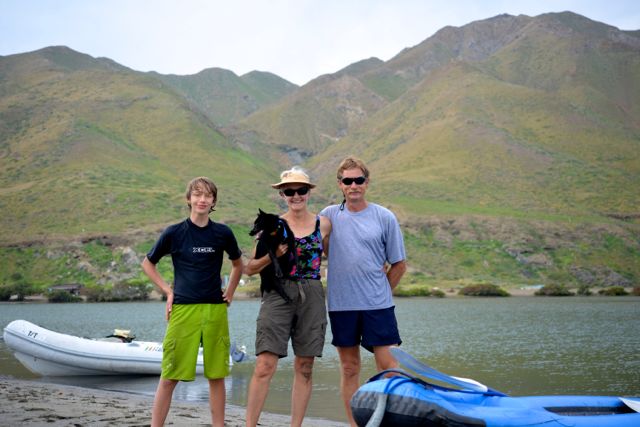 |
Our 2nd stop during our passage south from San Diego to Cabo San Lucas with the 2012 Baja Ha Ha. (This is where Jim is June 20+ 2015)
56 Photos
Created 21 June 2015
|
|
Jim has prepped & is sailing/bashing our sailboat up the outer coast of Baja.
4 Photos
Created 19 June 2015
|
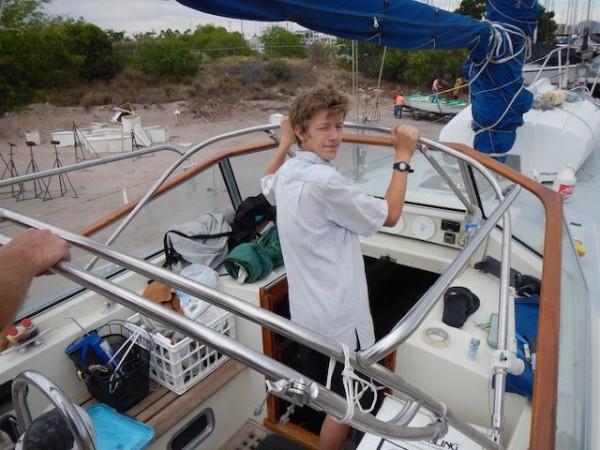 |
Boat painting continues while we pull the mainsail out of the boat and reattach it.
12 Photos
Created 5 April 2014
|
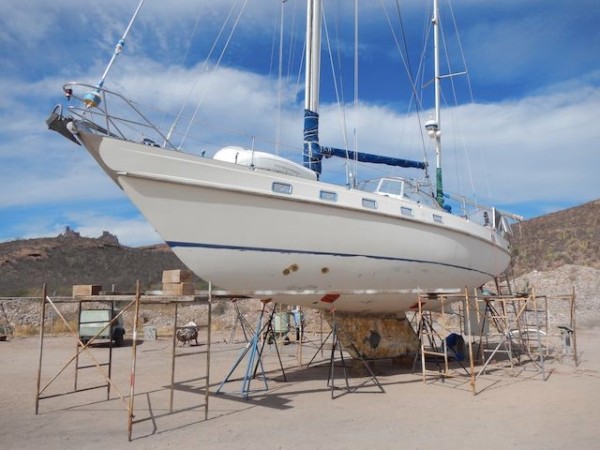 |
Beth and Glen join Jim over Glen's spring vacation in San Carlos, Mexico where the boat is hauled out for painting.
26 Photos
Created 3 April 2014
|
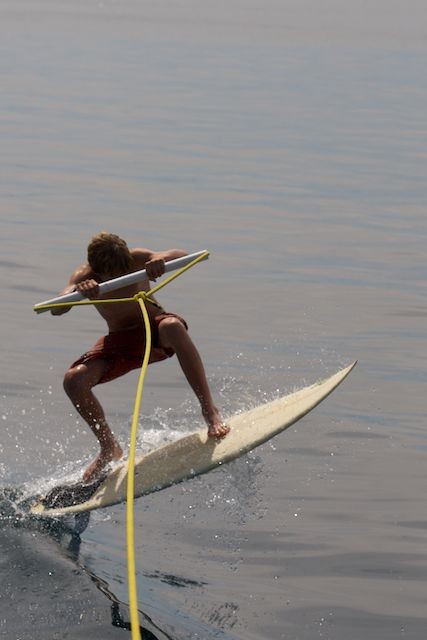 |
Glen surfs his new board by being towed behind our sailboat as we travel north in the Sea of Cortez.
9 Photos
Created 13 June 2013
|
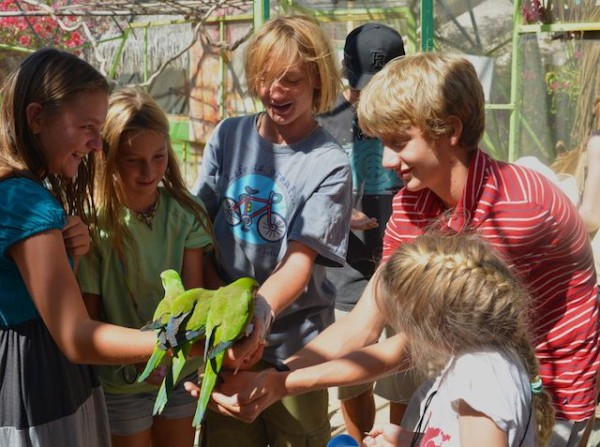 |
Nine of us from 5 family boats visited La Paz's Serpentarium. The highlight was the aviary, where we all got to feed birds that ate out of our hands.
41 Photos
Created 1 June 2013
|
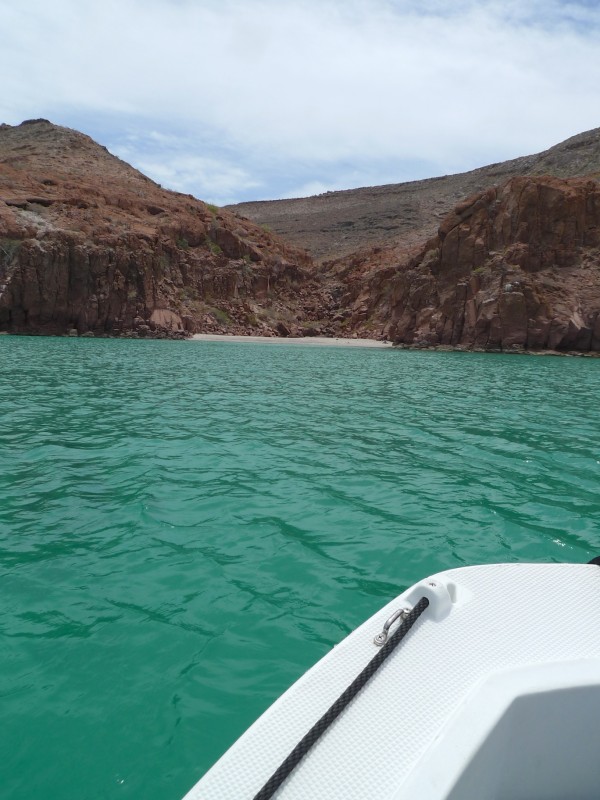 |
We loved getting close to the cactus and volcanic rock on this steep, rocky section above a white beach along the lower Sea of Cortez.
25 Photos
Created 24 May 2013
|
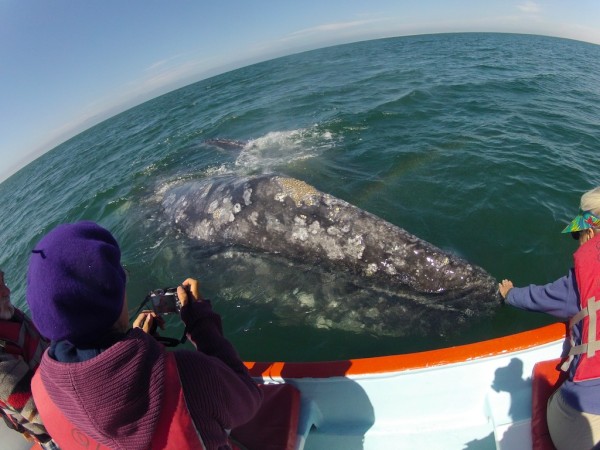 |
Several mother-calf pairs of gray whales interacted with our boat and us in San Ignacio Lagoon -- an amazing experience.
16 Photos
Created 5 May 2013
|
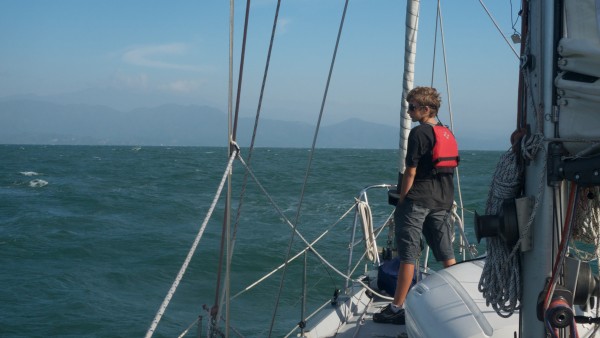 |
On our first day in San Blas we toured the town and ruins with fellow boaters from Lady Carolina
12 Photos
Created 25 February 2013
|
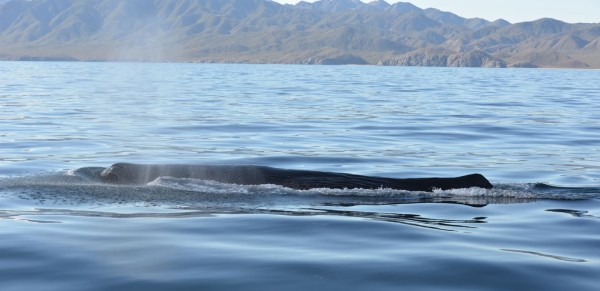 |
East of La Paz, in Cerralvo Channel, we encounter a lone, young sperm whale.
6 Photos
Created 26 January 2013
|
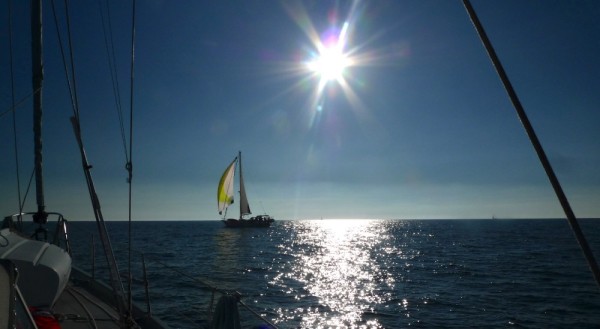 |
San Diego to Bahia de los Tortugas, including Glen's first tuna (under full sail) and our first overnight sailing.
35 Photos
Created 30 December 2012
|
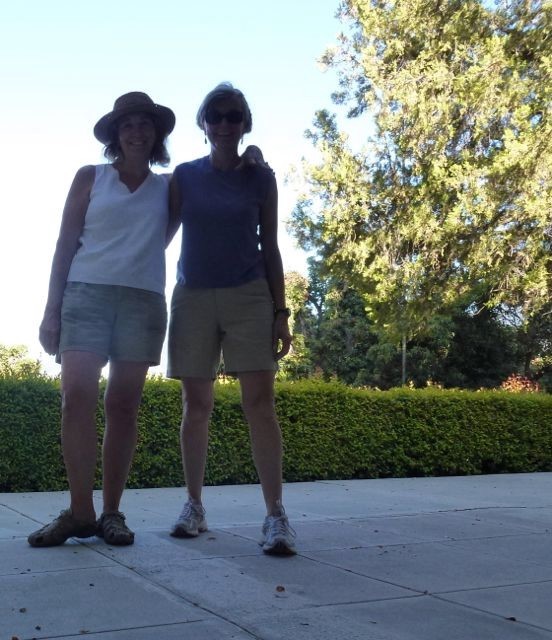 |
Glen and Beth move back to Alameda from Ojai; Glen attends Cazadero Music Camp; we decide to bail on maintaining teak cap rails and paint (!) them instead.
70 Photos
Created 19 December 2012
|
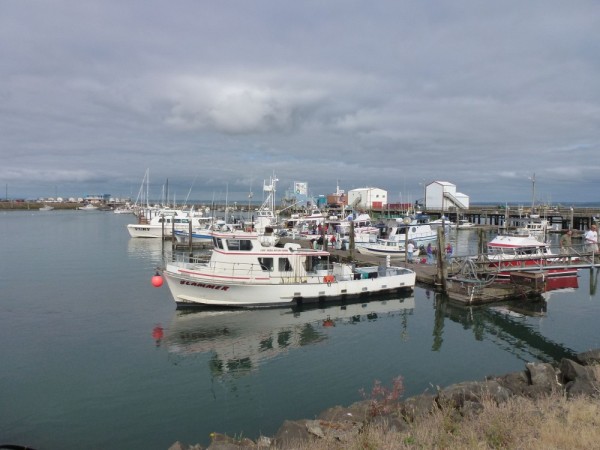 |
We are coastal hopping our way south, pausing to wait for very good weather and to experience small communities and people along the way.
16 Photos
Created 1 September 2011
|
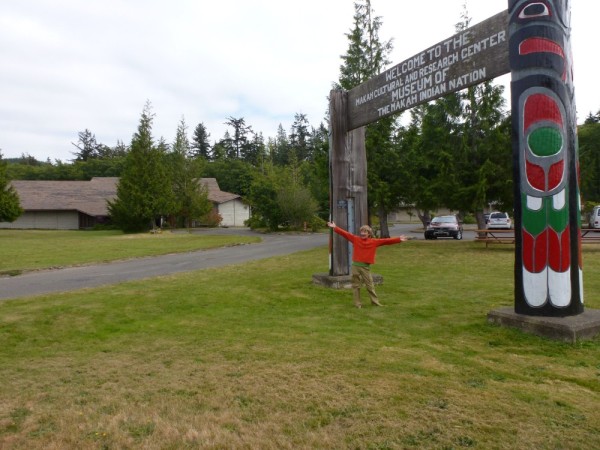 |
Still some essential projects to complete before heading out past Cape Flattery. Made time to visit the fantastic Makah Indian museum in Neah Bay.
9 Photos
Created 11 August 2011
|
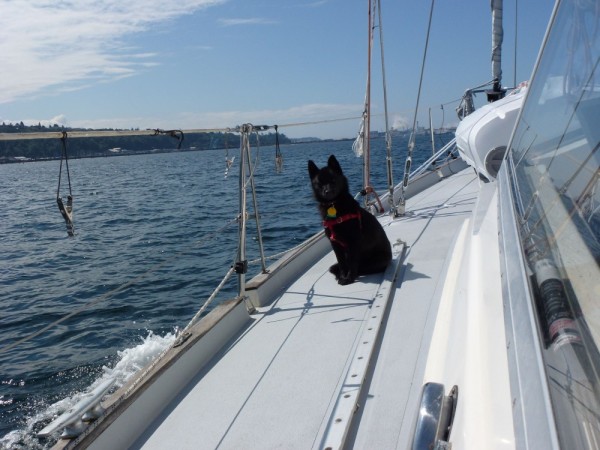 |
Last days in Port Townsend getting ready to start our offshore trip. First leg to Port Angeles; fogged out on Aug 7.
30 Photos
Created 8 August 2011
|
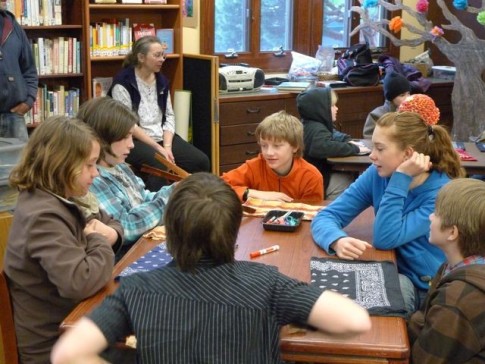 |
We launch our new main sail and discover 2 excellent, free, interactive educational web sites.
26 Photos
Created 29 April 2011
|
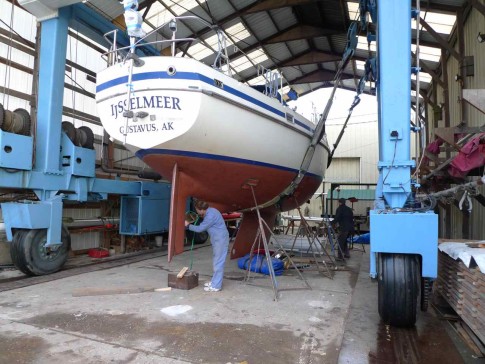 |
Ijsselmeer gets back in the water and is remasted. Christmas on board and with Nan and Ina.
6 Photos | 1 Sub-Album
Created 23 March 2011
|
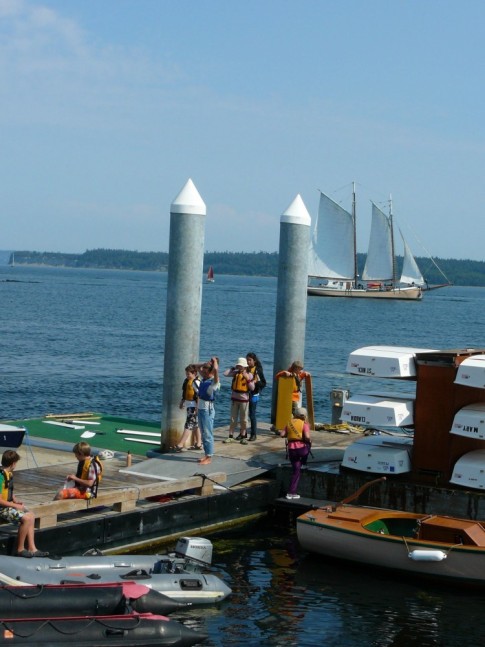 |
We started Ijsselmeer's re-rigging project with Brion Toss, Glen took a sailing class, and we all enjoyed PT's sunny summer.
14 Photos
Created 21 January 2011
|
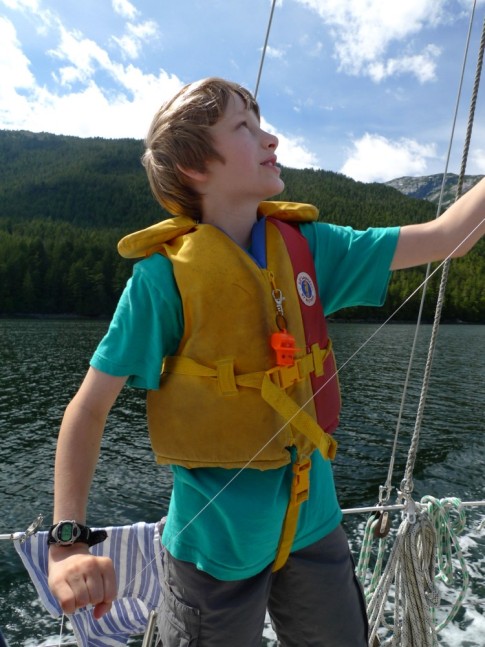 |
We had two beautiful days traveling down through the inside passage to an anchorage just south of Bella, Bella. Glen discovered kite-flying off the stern.
26 Photos
Created 29 July 2010
|
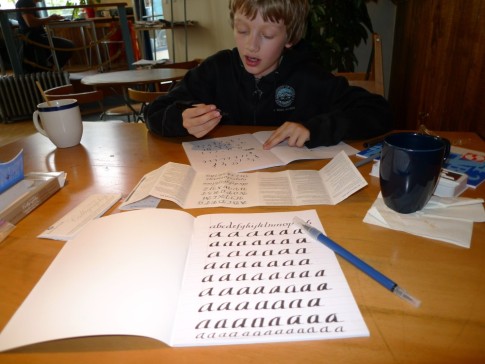 |
Jun 29-Jul 4: We spent a few extra days in Prince Rupert, British Columbia to do some work on Ijsselmeer, and we were also delayed by the weather.
7 Photos
Created 29 July 2010
|

